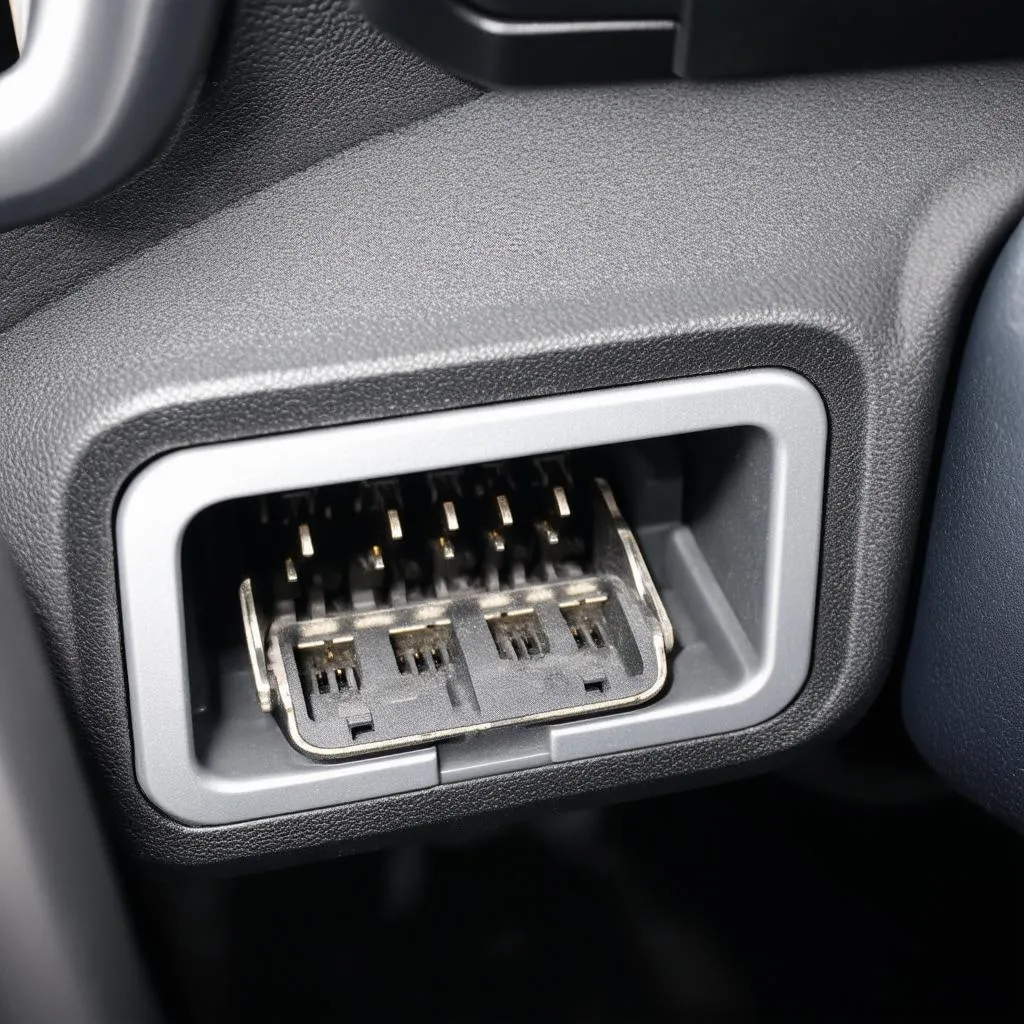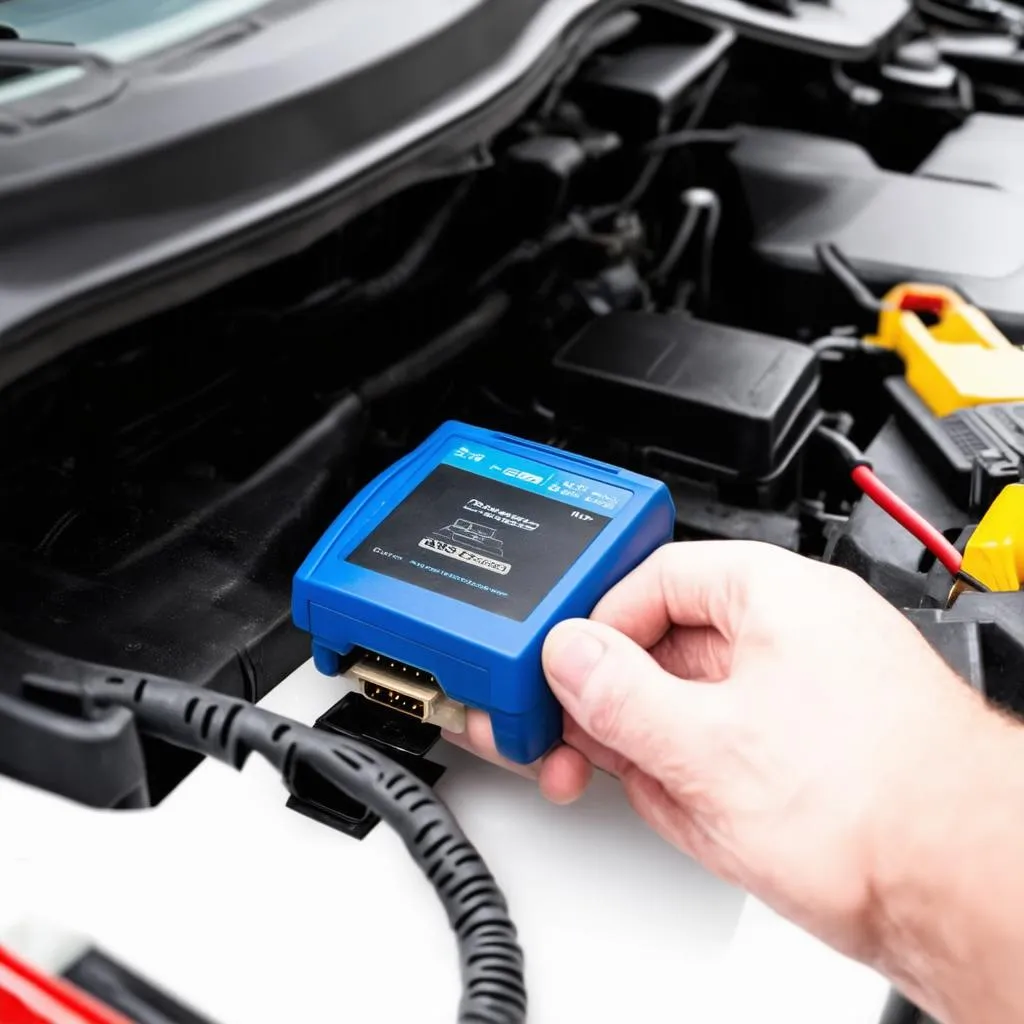Ever felt that pang of anxiety when your “Check Engine” light pops on? It’s like your car is trying to tell you something’s wrong, but in a language you don’t understand. Luckily, your car speaks through the OBD port, and finding it on your 2016 Honda Civic is easier than you think!
Decoding the Mystery of the OBD Port
The OBD port, or On-Board Diagnostics port, is like a window into your car’s soul (or at least its engine). It allows you to connect a diagnostic tool, often called a scanner, to read those cryptic trouble codes behind the “Check Engine” light.
Think of it like this: You’re experiencing some discomfort, so you visit a doctor. The doctor uses various tools and tests to diagnose the issue. Similarly, your mechanic uses the OBD port and a scanner to diagnose your car’s problems.
Where to Find the OBD Port on Your 2016 Honda Civic
Now, where does Honda hide this magical portal in your 2016 Civic? Don’t worry, it’s not tucked away in some hidden compartment.
-
Look Under the Driver’s Side Dash: Imagine you’re settling into the driver’s seat. Now, look down and to the left, below the steering wheel and near the fuse box. You’ll find a trapezoidal-shaped port, usually covered by a small plastic flap. That’s it – your OBD port!
-
Consult Your Owner’s Manual: Just like a wise sage, your owner’s manual holds the answers to many mysteries, including the precise location of the OBD port.
Why Knowing the Location Matters
Beyond simply reading and clearing those pesky “Check Engine” lights, the OBD port offers a surprising number of benefits:
- DIY Diagnostics: You can purchase an affordable OBD scanner and diagnose basic car problems yourself, saving a trip to the mechanic.
- Enhanced Performance Monitoring: Some OBD scanners provide real-time data on your car’s performance, such as speed, RPM, and fuel efficiency.
- Potential Insurance Discounts: Some insurance companies offer discounts for installing OBD-based tracking devices that monitor driving habits.
 OBD Port Location
OBD Port Location
Beyond the Physical: The Deeper Meaning
While the OBD port itself is a simple connector, some believe it holds a deeper significance. In the realm of car maintenance, it represents a bridge between man and machine, allowing us to understand and care for our vehicles more effectively.
Just as a doctor uses a stethoscope to listen to a patient’s heartbeat, the OBD port allows us to “listen” to our cars, understanding their needs and keeping them running smoothly.
FAQs About OBD Ports
Q: Are all OBD ports the same?
While the location and shape might vary slightly between car models, the functionality remains largely the same.
Q: Can I use any OBD scanner with my 2016 Honda Civic?
It’s best to use a scanner compatible with Honda vehicles. Check the scanner’s documentation or consult a mechanic to be sure.
Q: Is it safe to use an OBD scanner myself?
Yes, using a scanner is generally safe. However, avoid tampering with anything beyond reading and clearing codes unless you’re a qualified mechanic.
Exploring More Automotive Mysteries
Have more questions about your 2016 Honda Civic or need help with diagnostics? We’re here to help!
Contact us on WhatsApp at +84767531508 for expert advice and support on all things automotive. Our team of experienced mechanics is available 24/7 to answer your questions and provide guidance on diagnostic tools and repairs.
 OBD Scanner Connection
OBD Scanner Connection
Keep Your Engine Purring: The Importance of Regular Diagnostics
Just like regular health checkups are vital for humans, regular car diagnostics using the OBD port can help prevent major issues and keep your 2016 Honda Civic running smoothly for years to come. Remember, a little preventative maintenance goes a long way!